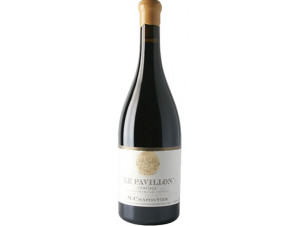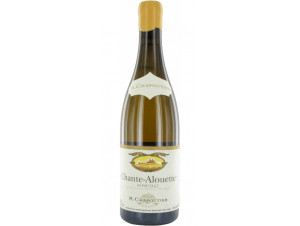You have no items in your shopping cart.
Wine Hermitage Ou Ermitage
The AOC Hermitage includes red and white wines produced in the towns of Tain-l'Hermitage, Crozes-Hermitage and Larnage, in the Rhône Valley, and more precisely in the Drôme. This northern Rhône appellation is one of the most prestigious. Read more on Hermitage ou Ermitage
-
Top Selling-11%
-
Top Selling-50%
-
Top Selling
- -25%
- -20%
- -20%
- -12%
- -17%
- -13%
- -15%
Appellation Hermitage ou Ermitage
The Hermitage appellation produces great wines that span the ages
As everywhere in the Rhone Valley, it was during the Roman occupation that vine exploitation appeared in the location of the current AOC Hermitage. The Romans called these wines "vins de Vienne", then traces of the wines of this AOC are found under the name "vins du coteau de Saint-Christophe", as there is a Chapel dedicated to the eponymous saint. In the 13th century, the knight Henri Gaspard de Sterimberg, came to settle on these places, to repent for his participation in the Crusades against the Cathars, and so he decided to settle as a hermit, and to maintain the vines around.
The name then changed from Ermitage to Hermitage, and began to become very well known, in France, then all over the world. It is even said that during the reign of Louis XIV, Hermitage wines were a favourite of the Tsars of Russia, but other illustrious people have mentioned on various occasions their love for these wines: Henri IV, Louis XIII, Louis XIV, Alexandre Dumas, to name but the most famous! The AOC was registered in 1937.
The Hermitage AOC covers only 136 hectares, in a particularly delimited and precise area. The vineyard is in fact planted on a hill, the hill of L'Hermitage, and on the slopes that flow from it as well as on the land surrounding this hill. Yields are around 37 hectolitres per hectare, for a total production of 5,156 hectolitres per year, on average.
The Hermitage AOC benefits from a variety of terroirs, suited to each wine
The Hermitage hill is divided into three distinct parts. The upper part of the hill is called Les Bessards, and is considered to be a prime location for red wines. This is where the Chapelle de L'Hermitage is located, where the chevalier Sterimberg lived. The soils here are mostly granite. The middle of the hill is divided into two parts: the Méal and the Greffieux. The Méal has a wonderful southern exposure, and the soils are mostly limestone and silica, while the Greffieux are the more fertile, earthy soils. The bottom of the hill is also divided into two parts: les Murets and les Dionniers. Their east-facing exposures make them the coolest terroirs of the appellation, and therefore the preferred locations for white wines. The soils are more clayey.
The AOC produces 70% red wines, 30% white wines, and straw wines, but this production is confidential. The reds are produced from Syrah, which can be supplemented by up to 15% of Roussanne and Marsanne. These two grape varieties are used to blend the white wines. The specifications mention for each type of wine the minimum residual sugar levels that must be found in the mouts: 170 g per litre for reds and whites, 225 g per litre for vin de paille. The climate of the AOC is Mediterranean, sheltered from the northern winds, the majority of the slopes of the appellation are south-facing, so the sunshine is exceptional.
What to expect when tasting a Hermitage?
To the eye, the reds have a beautiful ruby robe, bright and deep, particularly sustained. More garnet-coloured in their youth, the wines tend towards orange highlights with age. The greatest wines from beautiful vintages can actually age up to 30 years. The whites are pale yellow in their youth, tending towards gold when they reach maturity, around 5 years after the harvest.
The reds are very expressive and powerful on the nose. In its youth, Syrah expresses notes of red fruit, and sometimes violet. After a few years, the nose becomes more spicy, peppery, animal and undergrowth. The whites are very floral on the nose, with the riper ones expressing toasty, honey and wax notes.
On the palate, the Syrah expresses itself in a powerful and tannic way, but always with finesse. The aromas sensed on the nose are confirmed and amplified. With time, the wine becomes rounder and smoother. The whites are particularly unctuous, with aromas of hazelnut, peach and apricot. The floral side is always very present, their acidity is very limited, they are wines with a very fat body.
What dish to accompany an Hermitage?
The reds go perfectly with game, grilled meats and spicy, pepper-based, curry dishes. Venison, pheasant, hare accompanied by mushrooms, or beautiful cheese platters also go well with AOC Hermitage wines. A chocolate mousse will also sublimate the spicy aromas of Syrah.
The whites will make wonderful matches with roast poultry and other grilled fish. More simply, on a nice board of artisanal charcuterie and cheeses, such as Saint-Nectaire or truffled cheeses (Brillat-Savarin). They also go very well with desserts based on fresh fruit, or a tarte tatin.
2 flagship domains of the Hermitage AOC
Domaine du Colombier
The Viale family has been cultivating 16 hectares of vines in Crozes-Hermitage and Hermitage since 1991. The property produces whites and reds with respect to tradition. This red Hermitage is particularly representative of its appellation. It is a safe bet that will not disappoint.Paul Jaboulet Ainé
The Domaine Paul Jaboulet Ainé, an unmissable producer in the Rhône Valley, needs no introduction. This white Hermitage, named after the Chevalier who gave his name to the appellation, is traditionally made, and perfectly reflects the typicality of the AOC whites: smoothness, roundness, and lots of flowers.
Vallée du Rhône appellations
Côtes-du-Rhône-Villages Laudun
Côtes-du-Rhône-Villages Massif-d'Uchaux
Côtes-du-Rhône-Villages Plan-de-Dieu
Côtes-du-Rhône-Villages Rochegude
Côtes-du-Rhône-Villages Sablet
Côtes-du-Rhône-Villages Séguret
Côtes-du-Rhône-Villages Signargues































 TWIL - Achat de Vin
TWIL - Achat de Vin


